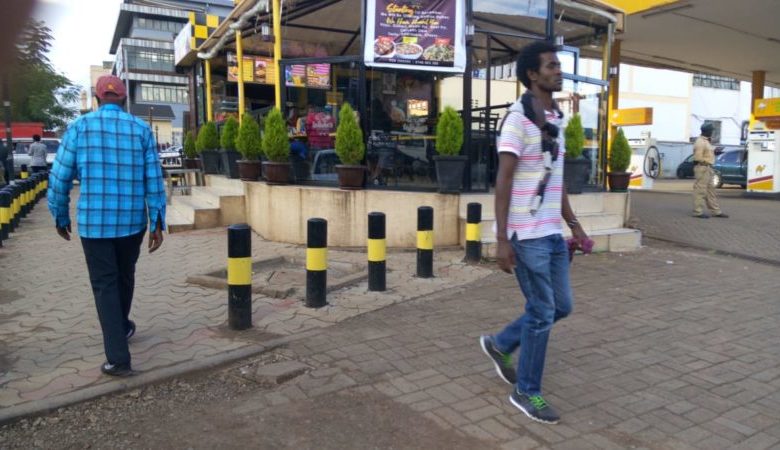Petrol Stations Flouting The Regulator’s Operational Rules

Petrol stations operators across Kenya seem to disregard their regulator’s demand to adhere to the laid down safety and quality standards in running their fuel businesses.
This is despite the Energy and Petroleum Regulatory Authority (EPRA) in February 2017 announcing that 500 petrol stations of the then 1,731 licensed fuel pumps risked closure for violating the construction specifications regulations.
The regulator revealed that over 30 percent of petrol stations in Kenya are in violation of EPRA’s prescribed construction provisions. The petrol stations have unlawfully incorporated additional businesses including eateries, car wash sheds and offices.
EPRA in September 2018 actualized its earlier warning by shutting down 38 petrol stations for non-compliance after conducting a two-month investigation between July and September pursuant to Regulation 15 of the Energy (Retail Facility Construction and Licensing). http://kenyalaw.org/kl/fileadmin/pdfdownloads/LegalNotices/7EnergyActRetailFacilityConstructionandLicensingRegulations2013.doc
The investigation into guidelines on quality of fuel on sale, transportation and storage involved 4, 456 tests in 675 petrol stations and illegal fuel selling points.
The crackdown in parts of the country including Nairobi saw 24 of 38 non-compliant stations demolished and owners arraigned.
Traders for the remaining stations salvaged their businesses by complying with the regulator’s guidelines. EPRA appealed to the public to report petrol stations suspected to be in violation of its regulations for action to be taken.
Petrol stations categories and compliance guidelines
The EPRA regulations allow various categories of petrol stations in Kenya to offer certain services based on the size of every business in square metres. The station categories from the smallest to the biggest are one tier, two tier, three tier and four tier.
One tier petrol station must have land size of 500 meters squared and a frontage of at least 22 meters, according to the Kenya Bureau of Standards’ Petroleum facilities – Retail and Consumer outlets – specifications provisions. The station should also have a six-metre entry and exit road and barred from operating extra facilities such as eateries and a car wash.
The two tier station is required to have 1,500 metres squared land size. It should also be 24 metres from the front entry line to the back to run extra facilities particularly a car wash and lubrication bay. It’s barred from operating an eatery.
The petrol stations regulator’s guidelines require a three tier station to have land size of at least 2,200 metres squared and a depth (the station’s entry line to the back) of 69 metres and a maximum storage of 80,000 litres. Facilities this tier is allowed to host include an office block with a spacious store, an eatery, a banking hall and at most three floors of multilevel office block. The station should be equipped adequately with emergency fire escape exits and measures inside the building to curb noise pollution in the case of a multilevel facility.
Tier four petrol station has more than 2,200 metres squared land size and it’s allowed to host underground liquefied petroleum gas (LPG) storage tanks not exceeding a capacity of 4.5 tonnes. This station is barred from running an eatery.
Furthermore the EPRA regulations forbids setting up of petroleum dispensing pumps in crowded or areas where crowding is likely to happen to avert any risk of deadly disasters. Such places include public transport terminals, market stalls, and churches among others.
Here is the link for the Petroleum Act, 2019 where Part IX provides for licensing and operation of wholesale and retail fuel businesses in Kenya: https://eregulations.invest.go.ke/media/The%20Petroleum%20Act%202019%20.pdf
RoGGKenya site visits
Random site visits by RoGGKenya around Nairobi’s Central Business District and Westlands to ascertain whether petrol stations have complied with the regulator’s prescribed guidelines shows gross violation of the regulations. Most tier one and tier two stations, for instance, have incorporated eateries or partnered with close premises to host cafes against the law. Some of these petrol stations include Kobil in the heart of the city along Koinange Street and OilCom at Westlands stage, putting people’s lives at risk in event of a disaster.
The Westlands petrol station recently incorporated a café in its frontage putting lives of customers at risk. Other stations like Oil Libya at Nairobi’s crowded OTC host heating facilities such as bakeries and cafes at the same time serving as terminals for boarding and dropping passengers by public service vehicles in violation to the existing regulations. The OTC petrol stations also packed with LPG cylinders share space with traders in stalls, thus, putting their lives at great risk when disaster hits.
Unanswered questions
RoGGKenya contacted the Director General EPRA he did not repsond. The following were the questions:
1.How many petrol stations are currently licensed in Kenya?
2. What’s the status (figure/percentage) of their compliance to the laid down construction specifications, safety and quality regulation?
3. How many stations have so far been shut for non-compliance?
4. Is the Authority aware that some tier one and tier two petrol stations, for example in cities and major towns, are operating some facilities such as eateries, car wash and bakeries against the prescribed regulations?
When is the Authority going to take action against such petrol stations to ensure they stick to the law? Some tier one and tier two petrol stations have even set up cafes in their frontages thus putting lives of customers at risk, for example, a petrol station at Westlands stage, Nairobi.
5. What’s the EPRA’s plans to ensure tier one and tier two petrol stations constructed in crowded places, for example within Nairobi’s OTC, are mindful of citizens’ safety in their operations.
What journalists should do:
- Apprise themselves with the four categories of petrol stations
- Understand laws and regulations governing the operations of petrol stations
- Check whether every category of petrol station adheres to the existing regulator’s guiding provisions on construction, safety and quality standards in their operations.
- Inform the public and the regulator about petrol stations violating the prescribed regulations
By Samuel Kisika